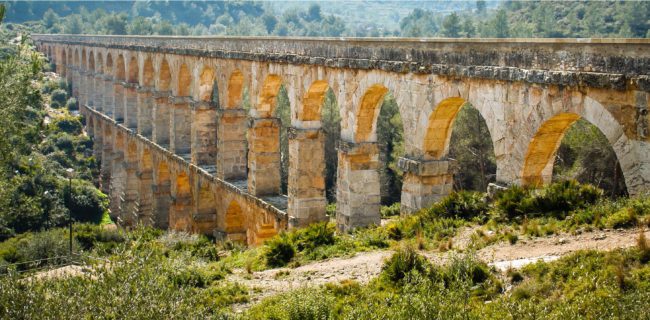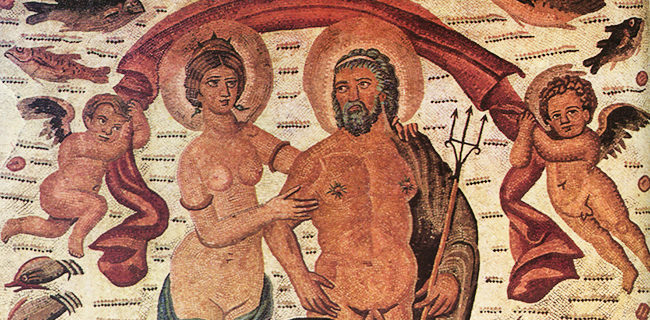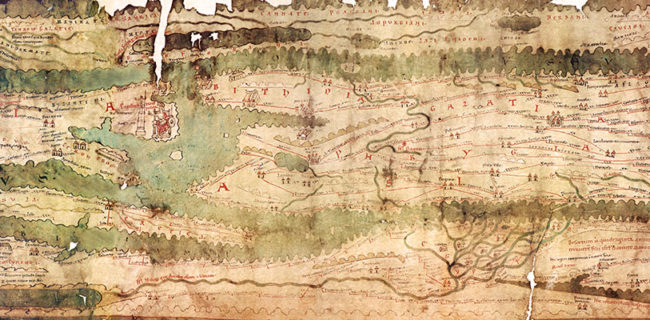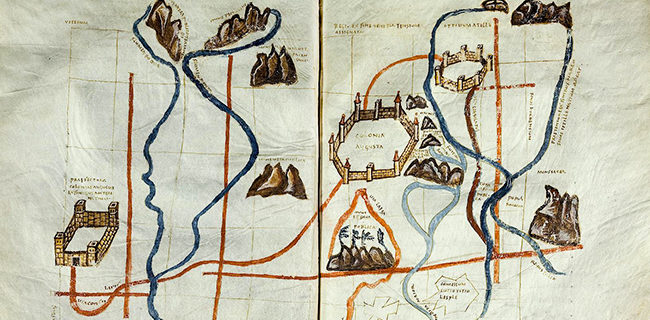This research group dealt with infrastructures that were created in view of strategic military and political objectives as well as natural spatial requirements and local conditions, infrastructures that were subsequently used and transformed by the heirs of the Roman Empire.
| 36 | Researchers |
| 6 | Research Projects |
| 7 | Dissertation Projects |
| 61 | Publications |
| 16 | Events |
The research took as its point of departure the stunningly uniform, seemingly almost systematic character of this infrastructure within the Roman empire. However, closer examination revealed a subtly differentiated view of local characteristics. Alongside the infrastructure installations themselves (roads, bridges, canals, aqueducts, etc.), the group also examined the corresponding functional contexts (resource management, governance and administration), as well as mobility, communication and knowledge transfer accomplished through and by means of these installations. Knowledge transfer is dependent, among other things, on the land surveyor’s art and on legal conditions.
The research was supported by the editorial projects for the Corpus agrimensorum Romanorum and the Miliaria provinciarum Hispanarum.
The research focused on the centrally controlled division between, on the one hand, infrastructures created centrally and functionalized to meet the needs of the empire as a whole and of its foreign relations – “global” infrastructures, for lack of a better term – and, on the other hand, regional infrastructures, i.e. structures that are local in scope and operationalized for the benefit of local groups.
A region of particular significance for several sub-projects was the Iberian Peninsula. The time frame extended from the Roman Republic to the western Early Middle Ages. And the inclusion of a broad spectrum not only of themes, but also and especially of methodologies – from ancient and early medieval history, classical philology and editorial philology to epigraphy, historical geography and Roman and European legal history – offered new insights into this topic.
Research Projects
- (B-1-1) Waterways: border, access, infrastructures
- (B-1-2) Legislation and Adjudication of "Water Law"
- (B-1-3) Infrastructure of the late antiquity as early medieval governance resource: Continuity and transformation
- (B-1-4) Infrastructures from judicial, gromatic and political perspectives
- (B-1-5) Edition Miliaria provinciarum Hispanarum
- (B-1-6) Die bildliche Darstellung von Raum in der Tabula Peutingeriana: Aneignung durch Kartographie?
Dissertations
- (B-1-1-1) Rule of the Sea: The Evolution and Transformation of an Ancient Concept from Thucydides to the later Roman Republic
- (B-1-1-2) To the Ends of the Earth. The Book of Acts as Universal History in the context of Roman and Jewish Historiography during the Roman Imperial Era.
- (B-1-1-3) Stable Systems? Risk and Uncertainty in the Ancient Economy
- (B-1-1-4) Maritime Revolution? Sextus Pompeius and the genesis of the Principate
- (B-1-3-1) Law and Border Policy in the Late Roman Cyrenaica
- (B-1-3-2) Via Britannica: Continuity and change and the Roman infrastructure in Britain from the end of the 4th to the 9th century
- (B-1-4-1) Legal systems of land use in the Roman colonies and in the province




